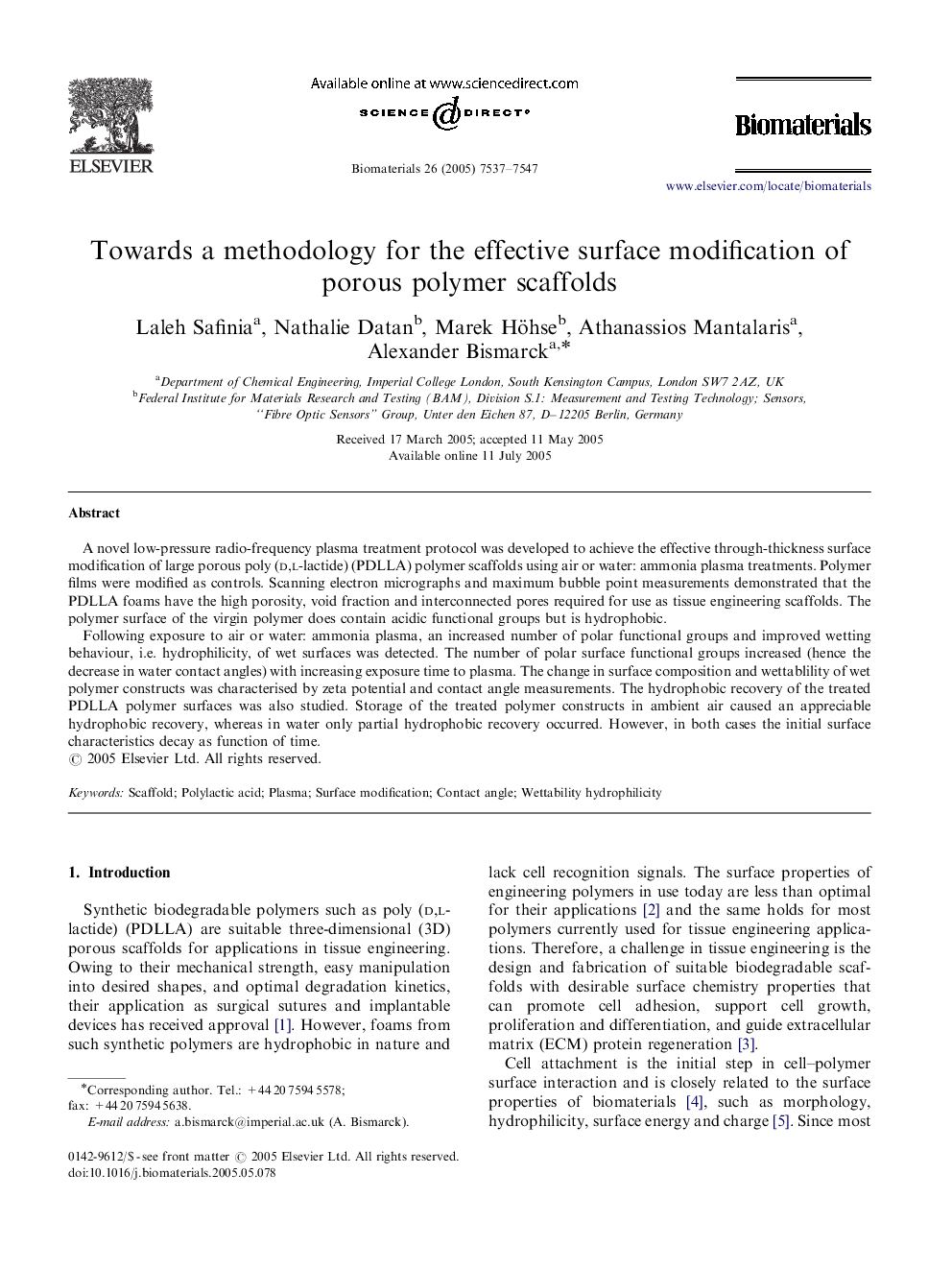| Article ID | Journal | Published Year | Pages | File Type |
|---|---|---|---|---|
| 11775 | Biomaterials | 2005 | 11 Pages |
A novel low-pressure radio-frequency plasma treatment protocol was developed to achieve the effective through-thickness surface modification of large porous poly (d,l-lactide) (PDLLA) polymer scaffolds using air or water: ammonia plasma treatments. Polymer films were modified as controls. Scanning electron micrographs and maximum bubble point measurements demonstrated that the PDLLA foams have the high porosity, void fraction and interconnected pores required for use as tissue engineering scaffolds. The polymer surface of the virgin polymer does contain acidic functional groups but is hydrophobic.Following exposure to air or water: ammonia plasma, an increased number of polar functional groups and improved wetting behaviour, i.e. hydrophilicity, of wet surfaces was detected. The number of polar surface functional groups increased (hence the decrease in water contact angles) with increasing exposure time to plasma. The change in surface composition and wettablility of wet polymer constructs was characterised by zeta potential and contact angle measurements. The hydrophobic recovery of the treated PDLLA polymer surfaces was also studied. Storage of the treated polymer constructs in ambient air caused an appreciable hydrophobic recovery, whereas in water only partial hydrophobic recovery occurred. However, in both cases the initial surface characteristics decay as function of time.
